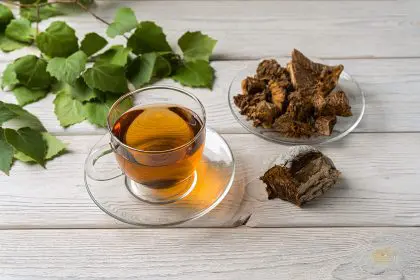When pain strikes, your first instinct might be reaching for the medicine cabinet. However, natural alternatives may offer relief without the potential side effects of over-the-counter medications. A growing body of research supports what traditional healers have known for centuries – many common herbs and spices possess remarkable pain-relieving properties.
These natural remedies can address various types of discomfort, from common headaches to dental pain, using ingredients likely already in your kitchen or easily found at local grocery stores. While severe or persistent pain always warrants medical attention, these gentle alternatives provide options for managing everyday discomfort.
Rosemary for headache relief
This fragrant herb does far more than enhance your roasted potatoes. Rosemary contains compounds that help dilate blood vessels, especially those in your head and neck. This vasodilation effect can provide significant relief during tension headaches and migraines, when constricted blood vessels often contribute to pain.
Beyond headache relief, rosemary offers additional benefits including improved circulation and enhanced mental clarity. Its anti-inflammatory properties may help reduce pain throughout the body.
To use rosemary for headache relief, measure one teaspoon of dried rosemary leaves per cup of hot water. Cover the mixture and allow it to steep for approximately ten minutes. Strain the liquid, then sip this herbal tea three times daily when experiencing headache symptoms. The gentle woodsy flavor makes it an enjoyable remedy.
For a more intensive treatment, some herbalists recommend adding a few drops of rosemary essential oil to a carrier oil and massaging it into the temples. However, essential oils should always be diluted properly before skin application.
Thyme for respiratory discomfort
During peak allergy seasons or when respiratory infections strike, thyme offers natural relief for sinus pressure and related discomfort. This herb contains thymol, a powerful compound with antimicrobial properties that can help address the underlying causes of sinus pain.
Thyme works by loosening congestion and reducing inflammation in respiratory passages. Its benefits extend to soothing irritated throat tissues and supporting overall respiratory health during challenging seasons.
To create a therapeutic thyme tea, steep one to two teaspoons of dried thyme in a cup of boiling water for approximately ten minutes. Drink this preparation three times daily until symptoms improve. The aromatic quality of thyme makes this remedy both effective and pleasant to consume.
For enhanced effectiveness, some practitioners recommend combining thyme with a small amount of honey, which offers additional soothing properties for irritated respiratory tissues. Inhaling the steam while drinking the tea provides additional benefits for congested sinuses.
Ginger for comprehensive pain management
Perhaps the most versatile pain-relieving herb, ginger addresses numerous discomfort types through its potent anti-inflammatory and circulation-enhancing properties. Like rosemary, ginger dilates blood vessels to relieve headache pressure while simultaneously reducing inflammatory responses throughout the body.
Research indicates ginger may match certain pain medications for effectiveness against various pain types, including menstrual cramps, muscle soreness, and arthritic discomfort. Its digestive benefits make it particularly valuable for addressing pain related to gastrointestinal distress.
Multiple preparation methods make ginger exceptionally accessible as a remedy. You can grate fresh ginger and add it to orange juice or other beverages, incorporate it into daily cooking, or keep ginger candy on hand for quick relief. For consistent benefits, ginger supplements in capsule form provide a convenient option.
For headache relief specifically, some practitioners recommend making a paste of grated ginger and applying it to the forehead. The warming sensation helps distract from pain while the active compounds work to reduce inflammation and improve blood flow to the area.
Cloves for dental discomfort
The throbbing pain of a toothache demands immediate attention, and cloves offer one of the most effective natural remedies while awaiting dental care. Eugenol, the active compound in cloves, provides both pain-relieving and antimicrobial properties that specifically benefit dental health.
This remedy has been used for centuries across numerous cultures to address tooth pain. Modern research confirms what traditional healers long understood – clove oil can temporarily numb pain receptors while simultaneously fighting bacteria that may contribute to dental infections.
For quick relief, apply a single drop of clove essential oil directly to the affected tooth. If the oil isn’t readily available, place a whole clove next to the painful tooth, with the pointed end positioned against the irritated area. As you apply gentle pressure, the clove releases its medicinal oils.
This remedy works best as a temporary measure while arranging professional dental care, as persistent tooth pain often indicates underlying issues requiring treatment. The distinctive flavor of cloves makes this remedy immediately recognizable to anyone who has used it successfully.
Turmeric for digestive discomfort
The distinctive yellow spice that colors many curry dishes offers remarkable benefits for digestive pain, particularly heartburn and related discomfort. Turmeric contains curcumin, a compound with powerful anti-inflammatory properties that can soothe irritated digestive tissues.
Research suggests turmeric helps reduce stomach acid production while strengthening the protective mucous lining of the digestive tract. These dual actions make it particularly effective for addressing pain related to acid reflux and similar conditions.
To harness turmeric’s benefits, incorporate the spice liberally in cooking or take two to three turmeric capsules before meals. For maximum absorption, many practitioners recommend consuming turmeric with a small amount of black pepper, which enhances curcumin bioavailability significantly.
For those who enjoy the flavor, golden milk – a traditional preparation combining turmeric with warm milk, honey, and other spices – provides a soothing evening remedy for digestive discomfort while potentially promoting better sleep, another factor in pain management.
Peppermint for insect bites and stings
When outdoor adventures leave you with irritating bites or painful stings, peppermint offers rapid relief through its cooling properties and ability to disrupt pain signals. The menthol in peppermint creates a pleasant cooling sensation that overrides pain perception while reducing inflammatory responses at the bite site.
Beyond insect bites, peppermint benefits various skin irritations and localized pain, including minor burns, muscle soreness, and tension headaches. Its pleasant aroma provides additional stress-relieving benefits that complement its physical pain-relieving properties.
For immediate relief, apply a single drop of peppermint essential oil directly to the center of a bite or sting. The cooling sensation begins almost immediately, helping to reduce both pain and itching. For children or those with sensitive skin, diluting the essential oil with a carrier oil like coconut or olive oil prevents potential irritation.
Some practitioners recommend creating a peppermint-infused witch hazel preparation to keep refrigerated during bug season, combining cooling properties for enhanced relief of summer skin irritations. The distinctive scent makes this remedy especially popular with children.
Sesame seeds for tooth pain
These tiny seeds contain compounds that can significantly reduce tooth pain when prepared properly. Sesame seeds offer natural analgesic properties while providing calcium and other minerals that support dental health more generally.
The oil in sesame seeds contains sesamin, a compound with anti-inflammatory properties that can reduce pain and swelling around damaged teeth. When prepared as a medicinal liquid, these seeds create an effective temporary remedy for dental discomfort.
To prepare this remedy, combine one part sesame seeds with three parts water in a small saucepan. Bring to a gentle boil, then reduce heat and simmer until the liquid reduces by approximately half. Allow the mixture to cool completely before applying directly to the painful tooth area.
For enhanced effectiveness, some traditional practitioners recommend chewing sesame seeds near the affected tooth, allowing their natural oils to release directly where needed. The mild flavor makes this remedy accessible even to those with sensitive palates.
When to try natural remedies versus seeking medical care
While these herbal remedies offer valuable options for managing common discomfort, understanding their appropriate use remains essential. Natural approaches work best for mild to moderate pain of known origin, such as occasional headaches, minor injuries, or temporary discomfort.
Always consult healthcare providers for pain that is severe, persistent, or accompanies other concerning symptoms. These natural options complement rather than replace appropriate medical care, particularly for complex conditions or when pain indicates potentially serious underlying issues.
For those interested in exploring herbal approaches to pain management, consider discussing these options with healthcare providers knowledgeable about integrative medicine. Many doctors now recognize the value of combined approaches that incorporate both conventional and traditional remedies for comprehensive pain management.
With proper understanding of their applications and limitations, these seven herbal remedies offer accessible, gentle options for addressing everyday discomfort while potentially reducing reliance on pharmaceutical approaches for minor pain relief.















